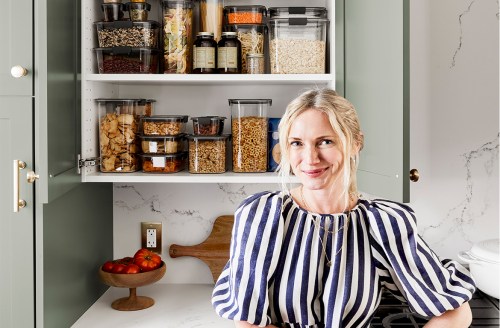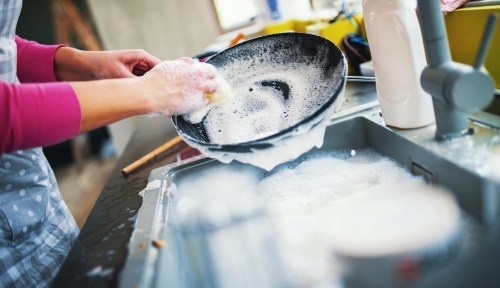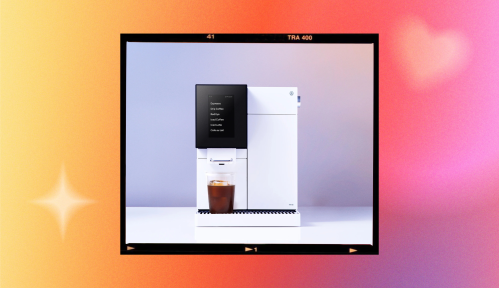Our editors independently select these products. Making a purchase through our links may earn Well+Good a commission
Whether you have a single cabinet dedicated to shelf-stable goods or a walk-in closet, pantry organization is a tricky game. You pull from your pantry multiple times a day, and developing a system that allows you to know where things are and keep things organized is essential, explains interior designer Emily Henderson. The best way to do this is to develop a pantry hierarchy.
Experts in This Article
interior designer based in Los Angeles
“If you don’t have a system, then everything turns to chaos. By setting it up, then at least maintenance of it is easier,” says Henderson. A pantry hierarchy is simply organizing your items in a way so the items you use most regularly are the easiest to access. “It’s just really assessing your own daily habits and what you use when and giving each shelf their own purpose, and then sticking to that. That’s the trick because if you don’t stick to it, then it’s chaos.”
Henderson partnered with Rubbermaid to reorganize her friend Sarah’s pantry with the new Rubbermaid Brilliance Plastic Food Storage Pantry Sets ($24 to $88). The Rubbermaid Brilliance line is airtight and stackable which allows you to use the entire depth and height of your shelves, which is especially amazing for people who have really small pantries, Henderson says.
“On the bottom, so the most easy to reach, is the cereals, snacks, the stuff that you will probably want to grab and go and have easy access to it,” says Henderson. “And then the next shelf up was daily cooking: the sauces, the rice, the pasta, the stuff that, again, you want to have pretty easy access to. And then we put baking, spices and even canned goods, because she hasn’t used them that much, on top.”
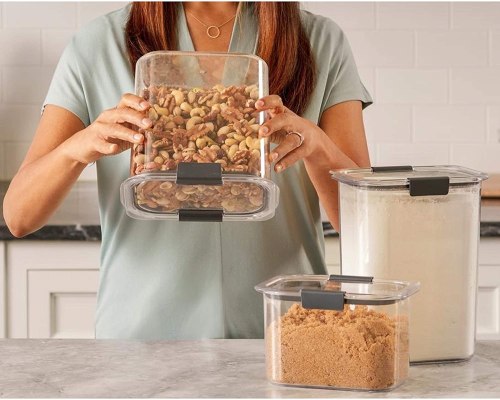
Rubbermaid Brilliance Plastic Food Storage Pantry Set of 3 — $35.00
In her own pantry, Henderson takes a different approach because it’s larger and because she has kids. On the bottom, she stores heavy things like canned goods and also pasta and rice. On the next shelf is snacks and cereal in reach for the kids and also sauces, nut butter, and the like. “I think it is fun. And [the kids] know, like this is our shelf,” says Henderson. On top, she stores the baking supplies “because we don’t ever bake,” she says.
For bottles that are easy to lose track of in the depths of cabinets, Henderson relies on clear lazy susans to make sure she can easily access everything she has.
“We use clear, lazy Susans for all the sauces. So all of your soy sauce and honey, maple syrup, things that if they toppled over, you’d be really bummed,” says Henderson. “Also, things that are kind of hard to see and reach in the back.”
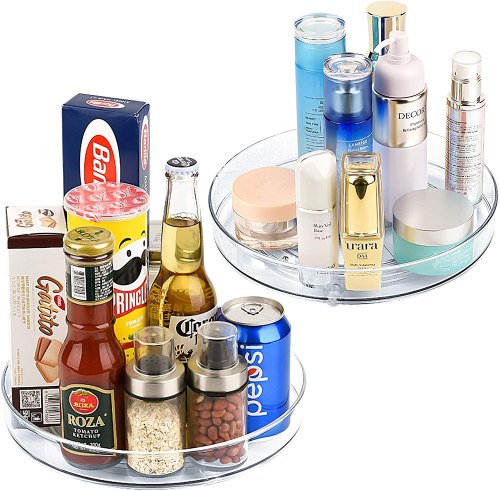
Empaxum 2 Pack Lazy Susan Cabinet Organizer — $20.00
Henderson says decanting items into clear containers makes your pantry hierarchy even more effective.
“I thought [decanting] was a thing that only fancy people did. As I started maybe like four years ago, and it truly makes your life a lot easier,” she says. “You would think it’s just the flours and sugars of the world, but it’s actually not.” When you decant, you get rid of packaging which saves space and also allows you to see what you have and when you’re running out. Decanting is also great for buying in bulk. “You can fit two cereal boxes in one of the larger containers.”
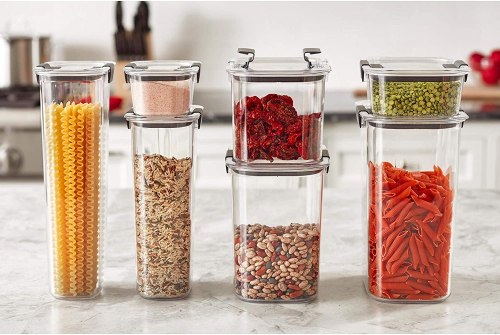
Rubbermaid Brilliance Plastic Food Storage Pantry Set of 14 — $88.00
While you don’t need to label every container (they’re see-through!), Henderson says it’s good to label things you can’t otherwise tell apart like almond flour versus coconut flour. “You don’t have to label everything cause you want to have some flexibility,” says Henderson. “If you can tell that it’s rice, I don’t think you need to put rice on it, but if you can’t tell what it is, I think it’s important to label.”
But, labeling can also be great to ensure every item you bring into your pantry has a designated home. That can be very specific like a container labeled “oats” for your oats, or more categorical like “salty snacks” for Triscuits or Cheezits depending on what you buy week-to-week. “Labeling gives you a rule. It gives you again, more of a system,” says Henderson. For instructions and expiration dates, Henderson says she cuts those out and puts them in the container.
Now, are you ready to give your pantry a major glow-up?
Oh hi! You look like someone who loves free workouts, discounts for cult-fave wellness brands, and exclusive Well+Good content. Sign up for Well+, our online community of wellness insiders, and unlock your rewards instantly.
Sign up for the Well+Good SHOP Newsletter
Get exclusive deals on wellness, beauty, fitness, and food products that have been hand-picked by our editors.
Got it, you've been added to our email list.
